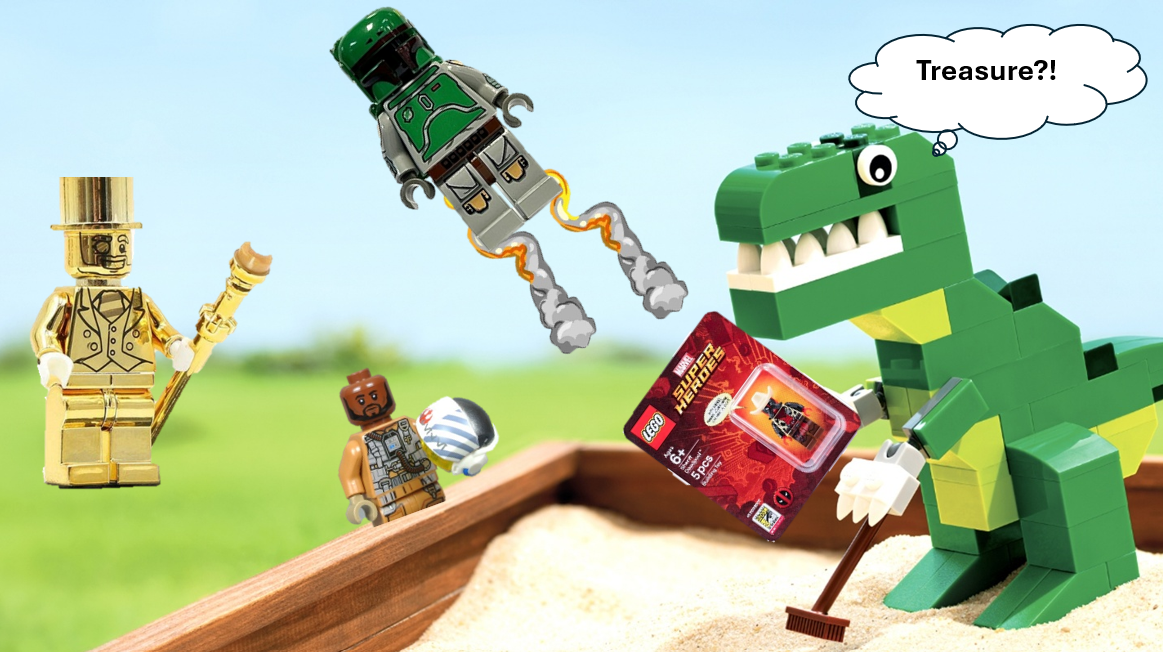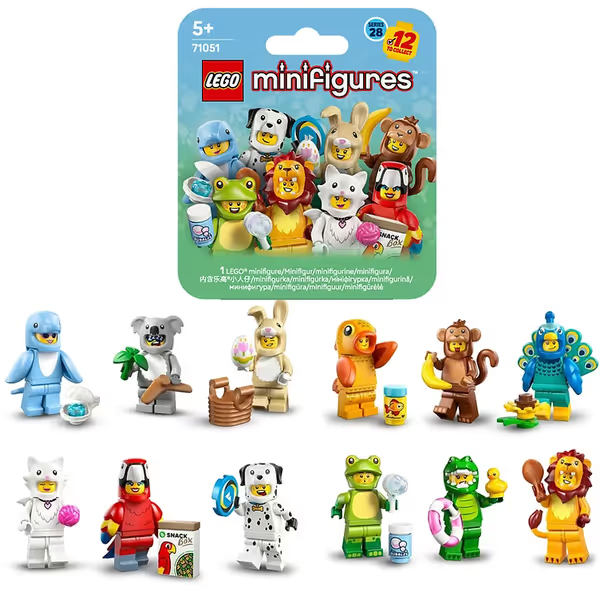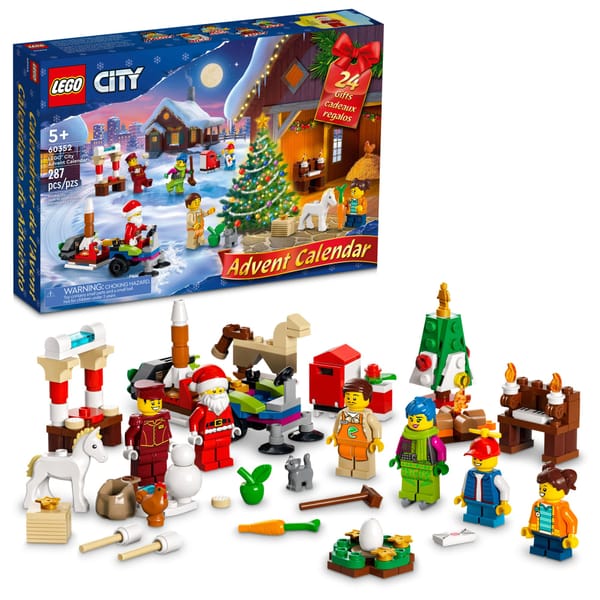Is That Minifigure Worth Something?

Collectors love stories. Lego collectors even more so. Rare minifigures tell some of the best stories, from the exclusive events they came from, tiny production runs only a few people know about, weird retailer promos from Target or Amazon, and the occasional brilliant idea from the Lego team that accidentally created a legend.
Below I walk through some of Lego's top crown jewels, the truly rare and extraordinary minifigs that regularly top price lists, explain why each is valuable in its own right, and give realistic price ranges sourced from reputable Lego price watchers.
A quick note: minifigure prices change fast and all the time. The numbers that I may share are based on market trackers and public sales data as of late-2025; try to treat them as relative value rather than guaranteed current sale prices.
I focused on individual minifigures known to sell for thousands rather than single-set prices. Obviously, any sets associated with these figures would obviously have insane price tags as well. For each fig I note origin, presumed rarity reason, and the price band collectors can typically expect.
The King of CMFs
Mr. Gold was a marketing masterstroke (and a collector fever dream). Released randomly in Series 10 blind bags in 2013, Lego numbered just 5,000 Mr. Gold figures worldwide. He sports a gold chrome finish, but with the random and extremely rare distribution, you get a minifig holy grail. Some collectors collected thousands of this series and never hit the jackpot.

The typical price for a Mr. Gold ranges from $6,500–$9,000+ for authentic figures, with the sealed versions selling for upwards of $10,000. It really is one of those big ticket items every collector wants.
Event Exclusives
Event exclusives are often printed in extremely low quantities and only handed out at industry events such as Toy Fair, San Diego Comic Con, or New York Comic Con. The Toy Fair 2012 Iron Man / Captain America figures are classic examples, with only 125 copies selling for between $1,500–$7,000+ depending on condition. Comic Cons are known for some insane minifigures from the Star Wars, Lord of the Rings, Marvel, and DC lines, many running for hundreds to thousands of dollars.

Cloud City Boba Fett
A true “game changer” historically: 2003 Cloud City Boba Fett, the first minifig with printed arms, was in a high-price, low-stock set and was available only in limited retail channels, so it has became exceedingly scarce, especially considering it is prone to discoloring and cracking. Collectors prize this variant because it marked a printing milestone and childhood character favorite.
The price ranges from as low as $1,500 to as high as $4,000 depending on condition and whether it’s sealed in the original set or listed loose. Market trackers show multi-thousand averages over recent years and it will doubtless go up from here.

SDCC
San Diego Comic Con figures like Jean Grey in Phoenix costume, Black Symbiote Spider-Man, Azog, among others, were made in tiny runs and given to attendees or as promotional items. A single desirable SDCC fig can run low-four to five figures on BrickLink or other secondary markets. BrickFanatics has a good roundup of the priciest SDCC minifigs for collectors looking to find the best deal

“I ♥ NY” Yoda
Retailer exclusives like the Toys “R” Us Times Square “I ♥ NY” Yoda are rare by design (small print runs tied to a single locations or events). They’re collectible for being both Star Wars (I would call Lego's biggest theme) and a novelty promo that only a few get their hands on. Prices have hit several thousand in their cleanest and most pristine forms.

Chrome & Metallic Figures
Lego has released a handful of chrome and metallic promo minifigs, including the Chrome Darth Vader polybag and Chrome C-3PO. Those with genuine factory chrome and limited distribution often fetch hundreds to low thousands, which is partially due to rarity, but also novelty. I personally have always wanted these and I can bet you would too, if you don't already have them!

So, if you see a minifigure with a chrome finish... GET IT! It might be worth a pretty penny later.
And this is honestly a very short list because if I listed them all, I would be going on forever. The goal here is just an overview of what is out there. Know what to look for, and what to look forward to.
Why Pay So Much?
There are honestly many reasons why people pay so much. For non-Lego fans or people who aren't part of licensed fanbases, these figures are probably not worth much, but with the right motivation, things turn a new leaf. Below is a list of some of the high price tags:
- Scarcity — tiny production runs or single-store promos run up market value.
- Stories — event items handed to press, staff, or VIPs have stories people want to own.
- Milestones — “first-of-its-kind” like printed arms and new moulds matter to serious collectors.
- Pop culture — an iconic character in an exclusive variant Deadpool or a unique Darth Vader packs emotional value for fans.
- Marketing — Mr. Gold is the textbook example of hype creating value.
How To Avoid Fakes!
- Check BrickLink, BrickEconomy, or BrickRanker price history for realistic market ranges before buying. Don't buy if the price is "too good to be true."
- Ask proof on ultra-rare figs such as original bag, event documentation, photos of the distribution. Many high-end sellers will supply that. Original packaging is often a must for most collectors.
- Beware customs & repaint “specials.” eBay and other resale sites very commonly have listings of these. Custom gold or chrome can be convincing, but Lego’s factory chrome has particular finishes and often traces on packaging. Always check seller reviews, ask someone who knows better.

- When in doubt, ask Lego or grading houses. Some sellers use third-party graders to verify and case ultra-rare figs, which adds resale confidence, but also preserves the cost. Reddit / community threads have good anecdotal authentication tips and are great places to ask questions when in doubt.
Buying & Selling Tips
- If you’re a buyer: buy from reputable sellers, check completed sales, and don’t be blinded by a single listing. Use market trackers and set alerts. Have friends who know things.
- If you’re a seller: keep those documents (photos, receipts), and consider grading or protecting those "five plus"-figure figs, buyers will pay for trust. And trust takes you a long way.
- If you’re a scalper: leave, we don't like you (jk, somewhat). But be careful, the market can cool fast and fakes flood in messing with the value. And please consider others. Lego isn't always just about the money.
Everything Tells A Story
The most expensive minifigures aren’t just expensive because they’re shiny or old, they’re expensive because they carry the kind of story collectors love: “I was there,” “I won it,” or “I snagged the one that no one else has.” They mean something, and that is what counts the most. They are all a product of marketing or myth, who knows; we love them nonetheless.
If you’re collecting for joy, chase the story. If you’re collecting for investment, do your homework, and if you stumble onto something that looks too good to be true, it probably is. But you never know!




